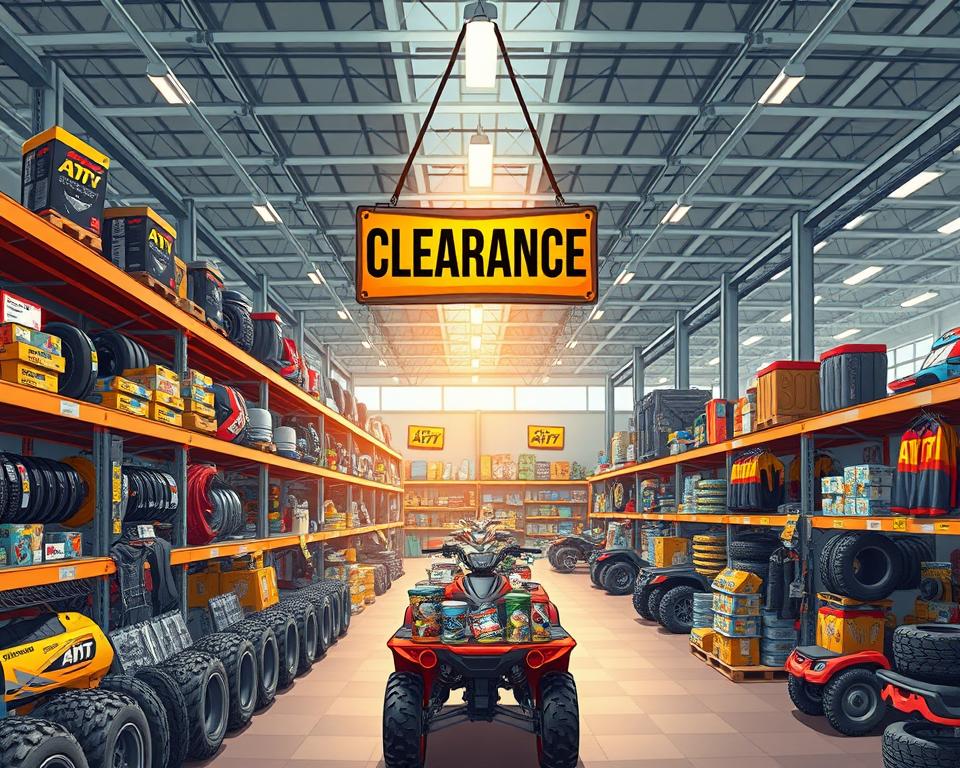Columbus Search Engine Optimization Services by Marketing1on1
You require a SEO agency in Columbus that maps local search behavior and drives trackable outcomes. Marketing1on1 Columbus is a licensed and registered digital marketing company with in excess of 12 years of experience in SEO, pay-per-click, content marketing, and social media strategy.
The specialists focuses on Columbus digital marketing aligned with districts and nearby landmarks, so your business wins Google Maps placements and Local Pack visibility. You’ll find inquiry and proposal forms on Marketing1on1.com to start a campaign that aims for sustainable growth and increased web traffic.
Whether you do business in Columbus, Ohio or Columbus, Georgia, a top SEO company Columbus should tailor tactics to your audience. Marketing1on1 Columbus serves as a partner focused on building your audience, boosting rankings for terms such as “SEO Columbus OH,” and growing long-term revenue.
Why Local SEO and Internet Marketing Matter in Columbus
Local competition in Columbus is intense. If you want nearby customers to discover your business, your online presence must reflect how the city searches. Local SEO and internet marketing in Columbus direct your spend on the people who are poised to visit, call, or purchase.
Competition & Search Patterns in Columbus
Local search trends in Columbus lean toward Columbus mentions and localized searches. Many users search for “SEO Columbus OH” or “best coffee near German Village” when they want fast results. You need purpose-built pages and listings to align with those terms.
Marketing1on1’s Columbus SEO specialists analyze search data across communities such as Victorian Village and Clintonville. That analysis finds local trends and keywords your competitors miss, so your campaigns engage buyers with intent.

Advantages of Local Pack and Map Rankings
Winning Local Pack real estate in Columbus places your business prominently in results on desktop and mobile. That visibility drives calls, clicks, and visits more consistently than standard organic results.
Map results boost trust and make navigation easy for customers. When your profile displays reviews and correct hours, people choose you over rivals who don’t show enough detail.
How geo-targeted strategies connect you to Columbus neighborhoods and landmarks
Geo-focused content associates your services with recognizable places like the Scioto Mile or Easton Town Center. That local relevance increases click-through rates for users doing area- or landmark-based searches.
SEO for Columbus neighborhoods supports building content, citations, and campaigns that align with neighborhood intent. You reach customers in Short North, Westerville, or beyond with messages that match their needs and location.
Marketing1on1.com Overview for Columbus Businesses
You need an agency that blends local knowledge with solid technical skills. The Marketing1on1.com profile shows more than 12 years of work in SEO, paid ads, content, social, and technical SEO. That depth helps you compete in both local searches and regional or national markets.
Company background and experience
Marketing1on1 has a proven history of industry speaking and contributing to industry publications. Their team handles audits, penalty reviews, and technical fixes like speed and mobile optimization. If you want an experienced Columbus SEO agency trusted by businesses, this firm delivers consistent, measurable work backed by years of case history.
Services offered across local and national SEO
Their services span local and national SEO, keyword research, on-page SEO, schema/sitemaps, and custom link building. You can get integrated internet marketing that includes paid search, social ads, email marketing, and web design. The Marketing1on1.com profile highlights full-service options that adapt to a single storefront or multi-location rollout.
Client success stories and testimonials relevant to Columbus businesses
Clients share strong gains: traffic up 2× in months, outranking national chains, and increased bookings for service providers. Retailers report higher foot traffic after local work. Active owner replies on listings demonstrate hands-on engagement and openness.
Professional SEO Company — Columbus
When you need a professional SEO company – Columbus businesses need, look for clear, measurable plans aligned to local demand. You want a partner that runs deep audits, implements on-page and technical fixes, and builds links that matter to your area. This approach steers clear of copy-paste tactics and focuses on steady gains that convert local traffic into customers.
A true local partner blends technical skill with community knowledge. You want complete site audits, keywords mapped to local intent, and content that speaks to local neighborhoods and landmarks. Clear, transparent reporting with a ranking improvement commitment demonstrate commitment to sustained growth.
How Marketing1on1’s Columbus packages meet local needs
Marketing1on1’s Columbus packages combine a comprehensive SEO audit, targeted keyword work, on-page improvements, and tailored link building. You get penalty audits and fixes, plus campaigns that can reach up to three nearby cities. Those elements address the practical challenges Columbus businesses face when competing on local search.
Why a Columbus-focused agency improves near-me visibility
Local focus matters for Columbus “near me” optimization because searchers expect instant, relevant results. A team with local SEO expertise in Columbus tunes your Google Business Profile and targets high-intent queries tied to neighborhoods and landmarks. That increases visibility in map results and Local Pack when customers search nearby.
Columbus SEO Packages and Pricing Overview
The right SEO package can shape how your business appears in search results for Columbus. Below are clear options with features mapped to different competition levels and company sizes. Use the guide to compare Columbus SEO packages and Columbus SEO pricing so you can select a plan aligned with your goals.
Starter: Features & Fit
The Starter Columbus SEO Package at $499/month is designed for local businesses chasing low-competition keywords. You receive a full SEO audit, algorithmic and manual penalty checks, keyword research, on-page optimization, and custom link building plus branding strategy. This plan covers up to three targeted cities and comes with a ranking improvements guarantee. No long-term contracts or sign-up fees let you test performance with limited upfront risk.
Business Package — What You Get
The Business SEO package for Columbus at $799/month is ideal for growing companies targeting moderately competitive terms. It includes Starter’s core services plus continuous tweaks from audits. You can target up to three cities, and the no-contract, no sign-up fee policy gives flexibility while you evaluate results. This tier strikes a balance between budget and reach for businesses ready to scale locally.
Ultimate Package — What You Get
The Ultimate Columbus SEO Package at $1,199/month targets high-competition keywords and broader markets. It bundles comprehensive audits, penalty discovery, advanced on-page improvements, and a strong link strategy with brand building. You can cover up to three cities and receive the same ranking commitment as the other tiers offer. This option is suited to ambitious growth and more competitive reach.
How No Contracts/Fees Help
No contracts or sign up fees provide a low-friction path to test digital marketing services company Columbus packages. You pay monthly and can review progress without long commitments. That optionality lowers risk and aligns cost with performance, a major factor when evaluating Columbus SEO pricing across providers.
| Plan | Monthly Price | Competition Level | Key Features | Cities Covered |
|---|---|---|---|---|
| Starter | $499 | Low | Audit, penalty checks, keywords, on-page SEO, custom links, ranking guarantee | Up to 3 |
| Business | $799 | Medium-low | Starter + continuous adjustments from audits | Up to 3 |
| Ultimate | $1,199 | High | Core inclusions + advanced competitive strategy and stronger link focus | Three |
Use the table to review Columbus SEO packages to balance features with pricing. If you want flexibility and a results-driven approach, Marketing1on1 Columbus packages deliver transparent options so you can match spend to outcomes.
Columbus SEO Strategy That Works
Start with a clear plan that matches local search patterns to business goals. Your Columbus SEO process opens by mapping intent and opportunity across neighborhoods, landmarks, and common queries. That early alignment prevents wasted effort and directs priorities for content, technical work, and outreach.
Keyword research tailored to Columbus search trends
Strong Columbus keyword work uncovers what residents and visitors actually type. You uncover long-tail phrases tied to neighborhoods, events, and nearby businesses. Use those terms to build service pages, blogs, and local landers so your content serves real intent.
Turning Keywords into Clickable On-Page Elements
On-page work turns keywords into clickable results. Create clear, keyworded titles and metas that drive action. Maintain clean, readable URLs. Optimize images and headings for clarity. Add internal links that guide users and inform crawlers.
Technical Foundations for Trust and Indexing
Technical SEO Columbus audits remove barriers to indexing and trust. Test speed and mobile UX, clean up broken links, and ensure HTTPS is active. Submit a full XML sitemap and add schema so search engines can show rich results that improve visibility.
Blend research, on-page optimization, technical fixes, and targeted outreach to move traffic toward revenue. This stepwise approach keeps your campaign measurable and adaptable as search trends change across Columbus.
How to Dominate Local Searches in Columbus
To succeed in Columbus local search, you need a strong mix of profile optimization, neighborhood targeting, and “near me” tactics. Marketing1on1 optimizes Google Business Profiles end-to-end in Columbus so your listing is complete, engaging, and Maps-ready.
Begin by verifying details, categories, hours, and photos are correct. You should post updates, upload fresh photos, and manage reviews to increase engagement and local signals.
Targeting Columbus neighborhoods and landmarks gives your site relevance for local users. Mapping terms to German Village, Short North, or the Scioto Mile ties content to real intent through Columbus landmark SEO.
Use schema plus neighborhood landing pages for local areas and landmarks. These pages help search engines understand where you serve and raise visibility for location searches.
“Near me” Columbus searches reflect high intent. You must optimize copy, metas, and schema to capitalize on those searches when users are ready to convert.
Consistent NAP and local citations boost trust. You should review listings, resolve inconsistencies, and add geo details to support both Columbus Google Business Profile optimization and Columbus landmark SEO.
This table contrasts quick actions with longer-term plays to grow “near me” traffic.
| Timeframe | What to Do | Expected Benefit |
|---|---|---|
| Immediate | Refresh GBP, add photos, respond to reviews | Improved map visibility and higher click-throughs from local pack |
| Short-term (2–6 weeks) | Launch area pages and implement local schema | Better relevance for searches tied to Columbus landmarks and areas |
| Medium Term (1–3 Months) | Build local citations, secure mentions in Columbus media | Stronger authority and increased ranking stability for local queries |
| Continuous | Monitor “near me” Columbus trends, refresh listings and content | Sustained local-intent traffic and better conversions |
Off-Page Strategies for Columbus Brands
You need off-page tactics that build trust and drive local visits. Outreach, earned media, and accurate directory listings provide signals valued by search engines and customers. Marketing1on1 targets efforts that raise authority and visibility—no shortcuts.
Begin by earning backlinks from reputable Columbus and industry sites. Quality beats quantity. A few strong links from The Columbus Dispatch, Columbus Business First, or regional chambers can produce faster lift than a pile of weak links.
Bespoke link outreach match content topics to the right editors. You secure guest articles, expert quotes, and mentions that bring local readers to your site. This approach builds steady referrals and stronger rankings.
Consistent listings matter for being found. You should review citations in GBP, Yelp, YP, and niche directories. Verify NAP and details are consistent to prevent confusion on maps and search results.
Managing reputation means soliciting reviews and responding well. That protects and improves perception.
Influencer outreach and press placement expand regional awareness. Partnering with community bloggers, local podcasters, or neighborhood newsletters earns authentic exposure. A targeted press note about a new service or event can earn pickups from local media and social shares.
Guest posting on relevant blogs attracts targeted readers while reinforcing topical authority via organic SEO company Columbus. Center topics on Columbus needs, such as neighborhood trends in Columbus, seasonal service needs, or landmark-driven promotions, to connect with regional audiences.
Use this compact comparison to weigh off-page tactics and benefits.
| Tactic | Main Benefit | Typical Targets |
|---|---|---|
| Columbus link building | Raises authority and organic rankings | Local news sites, industry blogs, chambers of commerce |
| Columbus citations | Improves Maps placement and consistency | Google Business Profile, Yelp, sector-specific directories |
| Columbus reputation management | Builds trust and click-throughs | Review sites, social, feedback tools |
| PR & outreach | Generates media coverage and social amplification | Local newspapers, regional PR outlets, newswires |
| Guest posts & partnerships | Reaches niche audiences and builds authority | Specialty blogs, orgs, newsletters |
Monitor results per tactic with referral visits, citation audits, and review trends. Regular measurement refines outreach, safeguards listings, and scales what works.
Analytics and ROI for Columbus SEO
Clear metrics show what works in Columbus. Marketing1on1 uses Columbus SEO analytics to identify keywords that drive visits and paths that lead to sales. That data surfaces top offerings so you can focus resources where they matter most.
Keep reports consistent. Monthly dashboards include organic traffic, conversion paths, and ranking movement. Those reports include the KPIs Columbus teams look for, such as CTR, goal completions, and Local Pack visibility.
Tracking cadence influences decision speed. Weekly reviews surface urgent technical issues. Monthly summaries reveal trends that guide strategy changes. Quarterly reviews tie budgets to long-term growth.
SEO ROI in Columbus connects metrics to revenue. Attribution traces leads from first visit to sale. That makes it easier to compare marketing spend against returns and optimize budget allocation.
Let data guide refinements. Teams adjust keyword lists, refresh content, fix speed, and tune outreach to increase performance. Iterative testing maintains steady, efficient improvements.
Use this compact snapshot to compare KPIs and actions.
| KPI | Why It Matters | Target | What to Do |
|---|---|---|---|
| Organic Sessions | Indicates overall search traffic | Up 10–25% quarterly | Expand winning content; refine titles/metas |
| Conversion Rate | Measures how well traffic becomes customers | 2–6% typical local | Optimize landing pages and streamline forms |
| Local Pack Impressions | Shows Local Pack exposure | +15–30% with local efforts | Enhance Google Business Profile and local citations |
| Top Keywords Ranked | Reveals terms that drive value | +8–20 per quarter | Prioritize content & internal links |
| Average Position | Tracks ranking health for key queries | Top 10 for core terms | Improve on-page and authority |
| Cost per Acquisition (CPA) | Direct measure of marketing efficiency | Declining trend month to month | Shift budget to lower-CPA channels |
Look for transparent conversations around metrics. Marketing1on1 combines local insight with long-term tracking so you track realistic, measurable progress. That approach turns KPI reporting into a driver of steady, data-driven growth.
Selecting Your Columbus SEO Partner
Choosing an agency shapes your success. You want an SEO partner that knows neighborhoods, landmark queries, and the competitive field. Follow a structured vetting method to separate genuine expertise from flashy promises.
Be alert for red flags. Avoid firms that promise instant rankings, hide their link sources, or refuse to show analytics. Skip agencies without case studies or reporting. These signs indicate risky, short-term tactics.
Pose focused questions to candidates. Ask for their keyword and local targeting process. Ask if they can share Columbus-specific case studies and sample reports. Verify technical audits, penalty reviews, KPIs, and cadence.
Assess breadth and flexibility. Ensure they can cover PPC, social, content, and design. Ask about contract terms, sign-up fees, and how they measure success month to month. Clear answers indicate accountability.
Compare offers with clear criteria. Weigh documented results, citations, and references. Favor long-term gains over one-off spikes. A comprehensive partner will show how local signals plus on-site fixes build “near me” visibility.
When considering Marketing1on1, run your vetting. Look at case studies in Denver, LA, Boise, etc.. Ensure they skip one-size-fits-all tactics and commit to measurable results.
Final Notes
When you need a professional SEO company – Columbus businesses benefit from a partner that knows the local landscape. Marketing1on1 delivers experience, clear pricing (Starter $499, Business $799, Ultimate $1199), and zero contracts/sign-up fees. You gain audits, technical tune-ups, on-page SEO, link outreach, and GBP optimization with measurable ROI focus.
Columbus rewards local tactics: geo-targeted keywords, neighborhood and landmark optimization, and citations capture customers who search with intent. The summary for Columbus SEO shows that targeted campaigns lift visibility in map packs and organic results, driving in-store visits and online conversions for businesses across multiple sectors including health, legal, retail, and services.
Select a partner with transparent reporting, proven methods, and local expertise. Marketing1on1 Columbus shows that with tailored strategies and clear metrics, you can improve rankings, attract nearby customers, and grow revenue while keeping spend controlled.









